What is Computer Science
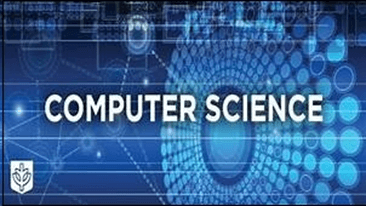
Generally, the word 'science' refers to the study of principals and the computation of a particular concept. Like General Science or Social Science, Computer Science is the scientific study of a computer system. It represents the theoretical study as well as practical implementations of a computer system. It incorporates all information on hardware and software parts. From brief to detailed, each related concept of a computer system is explained in it. It describes each part and process held in a computer system covering all parts from the core to its advanced topics. It lets us know and learn about algorithms, processes, programs, data representation, and the method of computing the digital information. Its discipline introduces various algorithms and data structures, network designing, concepts of programming and modeling, and artificial intelligence. Computer Science foundations are covered from mathematics and engineering subjects that result in electronic circuit design techniques, techniques from probability and statistics, etc.
Disciplines of Computing
Computer Science relates and belongs to the family of five separate but interrelated disciplines, which are collectively known as the Discipline of Computing. These disciplines are separated, but interrelated means that although they cover different concepts for research, their objective of the study is computing, which is the same for each. These five disciplines are:
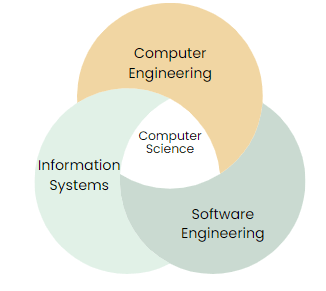
1. Computer Engineering:
It is the study of computing, algorithms, and the fundamental ideas that guide computer systems. Both the theoretical and practical sides of computers are included. Data structures, algorithms, programming languages, artificial Intelligence, and computer graphics are just a few of the subjects that computer scientists' study. They create new algorithms and techniques to address complicated issues and progress computers.
2. Computer Science
It focuses on how information is managed and organized inside organizations using technology. It entails researching both the management and technical facets of information technology. Professionals in information systems analyze the information requirements of businesses or organizations, then build and execute the systems necessary to meet those requirements. They could be involved in building user interfaces, creating databases, or overseeing enterprise-wide information systems.
3. Information Systems
It focuses on practically using computer systems and technology to suit company goals. IT specialists concentrate on setting up, maintaining, and managing networks and computer systems. They ensure that networks, software, and hardware are correctly set up, protected, and maintained. IT professionals may also aid consumers with technical support and troubleshoot computer system problems.
4. Software Engineering
It focuses on designing, developing, and maintaining software systems and applying engineering concepts to these processes. Software engineers create high-quality software products using organized processes and approaches. They analyze user requirements, develop code, build architectures, and test and manage software systems. Collaboration, project management, and a dedication to producing dependable and effective software solutions are all part of software engineering.
Even though each of these fields has a distinct area of study, they are all related to the larger topic of computers. Computer engineering provides the hardware foundation on which software systems run. Computer science provides the theoretical underpinnings and algorithms that drive software development. Information systems and information technology focus on the practical application of computing in organizational settings. Software engineering combines all these aspects to develop reliable and efficient software solutions.
The computing discipline is continually developing due to technological breakthroughs and our increasing reliance on computers in numerous facets of our life. It covers a wide range of job prospects and scientific fields. The subject of computing provides a broad and interesting range of study options, whether you're interested in building computer hardware, creating cutting-edge software, managing information systems, or ensuring IT infrastructure runs smoothly.
Associations and societies including IEEE-CS (the IEEE Computer Society), ACM (the Association for Computer Machinery), and AIS (the Association for Information Systems) have collaborated and working since 1991 in order to develop and enhance the taxonomy of these disciplines and guidelines for the educational institutions all over the globe which use these disciplines for research, postgraduate, and undergraduate programs.
Fields of Computer Science
A computer scientist is a person who researches and studies the theory of computation and design of software systems. As per the study, the fields of Computer Science are divided into two parts:
1. Theory, or Theoretical Part: It emphasizes on the abstract concepts such as Computational complexity theory, Programming language theory, Human-computer interaction theory (deals with the usefulness, usability, and accessibility of a computer system), Computer Architecture, Computer Engineering, and so on.
- Computational Complexity Theory: This area investigates the study of computational issues and their inherent complexity. This method includes examining the resources required to deal with problems like time, space, and computing power.
- Programming Language Theory: This field investigates the design, implementation, and analysis of programming languages. It focuses on formal techniques, type systems, semantics, and linguistic characteristics.
- Human-Computer Interaction Theory (HCI): HCI theory is concerned with the design and evaluation of computer systems with a major emphasis on the demands and experiences of users. It emphasizes the necessity of designing user-friendly interfaces and optimizing computer systems' usability, usefulness, and accessibility.
- Computer Architecture: Computer architecture is a subfield of computer science concerned with the design and organization of computer systems. It entails researching and refining how the many components of a computer interact to complete tasks.
2. Practical Disciplines: It deals with the practical implementation of computational science. Computational science refers to the computation and use of algorithmic techniques for modeling scientific data. It also emphasizes computer graphics and visualization for implementing real-world applications, networking, databases and information systems, practical knowledge of the operating system to become capable of tackling the system issues.
- Computational Science: Complex scientific issues are addressed using simulations and algorithm development. This discipline consists of responsibilities like modeling actual events, running simulations, and analyzing data to draw inferences and forecast outcomes in various fields, including physics, chemistry, biology, and engineering.
- Computer graphics and visualization: This area is involved with the design, editing, and rendering of pictures, animations, and other visible displays. It includes numerous technologies, including augmented reality, virtual reality, data visualization, and comparable methods.
- Networking: The design, implementation, and administration of computer networks are the main topics of networking. It requires an awareness of security measures, network structures, and protocols.
- Databases and Information Systems: Large volumes of data must be managed and organized in this discipline. It involves defining data models, planning and constructing database systems, and implementing effective data storage and retrieval methods.
Both these fields together complete the study of Computer Science because there may be some issues or points that can be better expressed when practical implementations are performed. Also, the theory remains temporary until understood practically.
History and Development of Computer Science
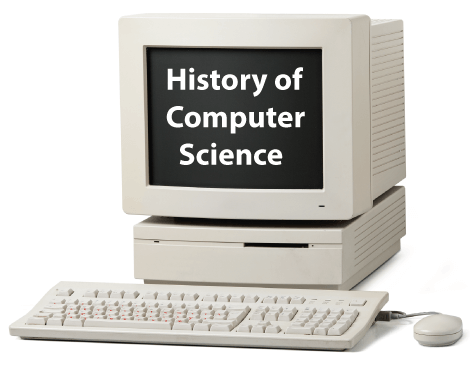
The development root of Computer Science relates to some distinguishable fields, which are:
- Mathematics: It gave the notions and introduced the concept of 'binary number system' and 'stored program'. It was understood that we could represent the information in the form of zeros and ones and store them in the system.
- Physics and Electrical Engineering: It stroked Boolean algebra's idea for circuit design, where it became possible to produce arbitrary outputs (false or true) by combining the inputs of electrical impulses to a circuit by Boolean algebra. It became possible to design a circuit with binary value inputs and get the desired combination of 0's and 1's as its output. Hence, the invention of the transistor, invention of optical, electronic, and magnetic media for the transmission and storage of information came into existence.
- Management information systems: These systems are known as Data processing systems that describe the method of processing the data. It led to the notion and evolution of concepts such as fetching information, searching, sorting, databases, and GUIs (Graphical User Interfaces.
All these fields led to the development of Computer Science.
1623: A scientist named Wilhelm Schickard designed and constructed the mechanical computer, the first working calculator.
1673: Gottfried Leibniz demonstrated a digital mechanical calculator known as Stepped Reckoner. Gottfried Leibniz was considered as the first computer scientist and information theorist.
1820: Thomas de Colmar invented Arithmometer, the first strong and reliable calculating machine to be used in offices for daily purposes. With this, he also launched the industry of mechanical calculator.
1822: Charles Babbage began to design the Difference Engine (the first automated mechanical calculator), which gave rise to the idea of Analytical Engine. The Analytical engine was the first programmable mechanical calculator. In 1834, he began to develop the Analytical Engine, and within two years, he sketched many salient features of the modern computer.
1843: Ada Lovelace translated and wrote a French article on Analytical Engine in which she published the algorithm to compute the Bernoulli numbers. It was considered the first published algorithm to be implemented on a computer.
1885: Tabulator was invented by Herman Hollerith, in which he used punched cards for processing the statistical information. With this, Herman's company became part of IBM.
1937: Howard Aiken initiated the ASCC/Harvard Mark me (known as the giant programmable calculator) after convincing IBM to develop it. The giant calculator was based on the Charles Analytical Engine. The ASCC/Harvard Mark I was able to use punched cards and CPU (Central Processing Unit) on its own. It was believed that after 100 years of impossible Babbage's dream, it had become possible, and the dream came true.
1940: The ENIAC and Atanasoff-Berry computer, which was known as the new and more powerful computing machines, were developed. The term 'computer' referred to the machines and their working. It was proved that more than calculations, computers could be used for other computation works also. The field of Computer Science was broadened to the study of computation.
1945: IBM (International Business Machines) founded the Watson Scientific Computing Laboratory at Columbia University, New York.
1950 and 1960: In this period, Computer Science started to establish as a distinct academic discipline.
1953: At the University of Cambridge Computer Laboratory, the Cambridge Diploma in Computer Science began. The diploma was the world's first computer science degree program. On the other side, the first transistorized computer was built by the University of Manchester. The transistorized computer was known as the Transistor Computer.
1962: The first department of Computer Science was formed in the Purdue University, United States.
1959: Mohamed Atalla and Dawon Kahng invented the MOSFET or MOS, i.e., metal-oxide-silicon field-effect transistor at Bell Labs. MOS was the first truly compact transistor which could be miniaturized and mass-produced for wide uses. It became possible to build high-density integrated circuit chips known as the computer or microcomputer revolution.
Etymology of Computer Science

In 1959, the term 'computer science' appeared in an article in Communication of the ACM for the first time. The writer Louis Fein in the article argued for the creation of a Graduate School in Computer Sciences. Finally, in 1962, the writer's efforts, including the efforts of numerical analyst George Forsythe were rewarded. Hence, universities began to create the departments of Computer Science, and the creation started at Purdue. A Danish scientist Peter Naur suggested terms 'Datalogy' and 'Data Science'. In 1969, the University of Copenhagen became the first scientific institution to use the term in its 'Department of Datalogy', and Peter Naur became the first professor in Datalogy. Numerous terms for the computing field were suggested to the practitioners in the Communication of the ACM. These names were flow-charts-man, turologist, turingineer, applied meta-mathematician, applied epistemologist. After three months, ACM also suggested the term Comptologist, then the hypologist, and then Computics was suggested. Computer Science was supposed to have a close relationship with maths because computer science was highly influenced by the work of Mathematicians like Alan Turing and many other personalities. Later on, the bond between computer science and software engineering came as an issue. In this dispute, David Parnas claimed that the objective of studying computer science is the properties of computation, and on the other hand, the objective of studying software engineering is the designing of specific computations for fulfilling the practical goals. Hence, it was seen that the academic, funding, and political aspects of it became dependent on whether to form mathematics emphasized department or engineering emphasized department. Finally, both the departments made efforts to bridge the computer science field educationally all over the globe.
Disciplines of Computer Science
After various revolutions in the history of Computer Science and after the encompassment of the Computer Science degree, various new disciplines in the field of Computer Science were introduced. So, if there are aspirants of Computer Science, they must gain the deepest knowledge they can. All the aspirants should understand the specializations and disciplines of Computer Science effectively. Thus, there are following specialization areas for the students who are pursuing the Computer Science degree:
- Bioinformatics: Bioinformatics brings together biology, computer science, and information technology. Computational approaches are utilized to analyze biological data and tackle biological issues. To analyze DNA sequences, protein structures, and biological networks, professionals in bioinformatics create algorithms and software tools. They support industries like genomics, proteomics, and drug discovery by gleaning valuable information from enormous biological datasets.
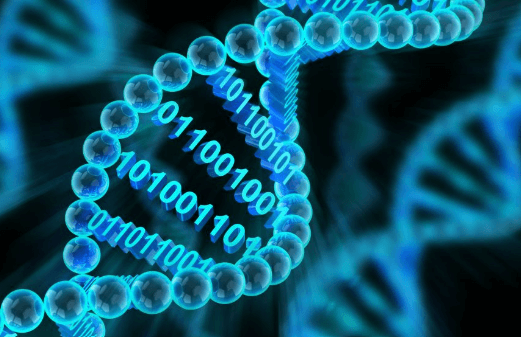
- Applied Mathematics: The applied mathematics subfield of computer science focuses on using mathematical ideas and techniques in real-world applications. It uses mathematical models, statistical analysis, and simulations to address complicated computer-related problems. Specialists in applied mathematics utilize algorithms and computational techniques to solve problems in computer graphics, optimization, data evaluation, and cryptography.
- Computational Physics: Computational Physics uses physics and computer science techniques to model and simulate physical systems. Computational physicists use mathematical models and algorithms to mimic physical events and carry out digital experiments. They contribute to disciplines including astrophysics, quantum mechanics, fluid dynamics, and material science by conducting simulations and analyzing the findings to acquire insights into intricate physical systems.
- Microprogramming: The microprogramming specialization focuses on low-level programming and the design of microprocessors and computer systems. Microprogrammers create the microcode that manages how computer processors function at the hardware level. They create microprograms that are effective and optimized to carry out instructions at the microarchitecture level. Specialists in microprogramming are essential for improving the functioning and performance of computer systems.
- Networks And Administration: Networks and Administration specialization involves designing, implementing, and managing computer networks and systems. Computer networks, including their associated hardware, software, and protocols, are kept secure and in working order by network administrators. They set up networking hardware, keep track of network performance, and resolve network problems. Network and system administrators are essential to keeping an organization's infrastructure safe and dependable.
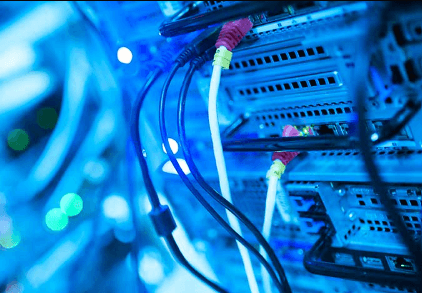
- Computer Architecture Networks: This Specialization focuses on designing and implementing computer systems, particularly the structure and organization of computer hardware and networks. Computer Architecture Networks students learn about processor design, memory systems, input/output devices, and network protocols. They learn how computer components interact and communicate to form efficient and reliable systems. Professionals in this field work on developing advanced computer architectures and optimizing network performance.
- Cryptography: Cryptography is the study of secure communication and data security. Cryptographic algorithms and protocols must be designed and analyzed to protect the secrecy, integrity, and validity of information. Students specializing in cryptography study cryptographic protocols, safe key exchange, digital signatures, and encryption methods. They learn to create secure systems and safeguard confidential data from manipulation or unauthorized access. The security of digital communication and transactions is crucially dependent on cryptography experts.
 < <
- Computer Engineering: Computer engineering is a field that incorporates components of both computer science and electrical engineering. It focuses on the creation of hardware and software for computer systems. Digital systems, microprocessors, embedded systems, and hardware-software integration are among the topics taught to computer engineering students. They acquire skills in circuit design, computer architecture, and system-level programming. Computer engineers work on developing and optimizing computer hardware, ensuring its compatibility and performance./li>
- Web Development: Web development includes the creation, design, and management of websites and web applications. It is the development of everything you view and interact with on the internet. Everything you see on a website, such as text, photos, and buttons, is constructed using various technology and computer languages. To bring these pieces to life, web developers employ tools and computer languages such as HTML, CSS, and JavaScript.

- Computer Game Development: Computer Game Development is centered around the conception, programming, and production of computer games. Students who choose this specialization gain knowledge in various areas, including game design principles, game engines, graphics programming, and artificial intelligence techniques specifically designed for games. They get proficient in game testing, 3D modeling, animation, and software development. Creating compelling and pleasurable gaming experiences that satisfy the expanding expectations of the gaming business is the main goal of computer game creators.
- Robotics: The field of robotics is concerned with creating, advancing, and using robots. Computer vision, artificial Intelligence, control systems, and mechanical engineering fundamentals are all topics covered by robotics students. They acquire skills in programming robots, designing robotic systems, and creating algorithms to enable autonomous behavior. Robotics specialists contribute to industrial automation, healthcare, exploration, and entertainment by developing innovative robotic technologies.
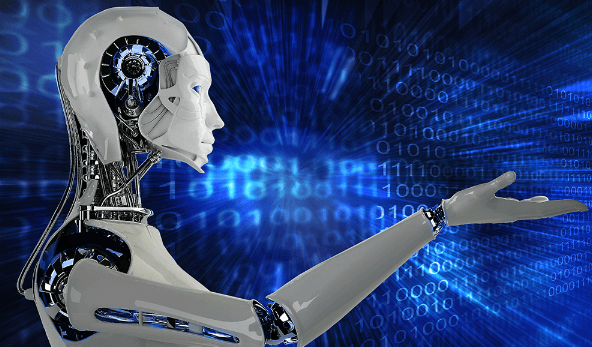 < <
- Software Development: Development is a broad domain that involves creating, maintaining, and upgrading software applications. Students specializing in software development are taught programming languages, software engineering principles, and various development methodologies. They acquire knowledge and skills in these areas to effectively build, maintain, and enhance software applications. They acquire skills in designing software architectures, writing code, debugging, and testing applications. Software developers work on projects ranging from mobile apps to enterprise systems, collaborating with teams to deliver functional and user-friendly software solutions.
- Simulation And Modeling: Simulation and modeling focus on creating virtual representations of real-world systems and processes. Students in this specialization learn about mathematical modeling, computational algorithms, and simulation techniques. They acquire skills in designing simulations, running experiments, and analyzing results. Physicists, engineers, social scientists, and healthcare professionals benefit from the work of simulation and modeling specialists because they may get insights into complicated systems without performing real experiments.
- Computer Programming: Computer programming is a critical component of computer science wherein students learn how to write code that controls computer structures. Learning programming languages, comprehending data structures, perfecting algorithms, and sharpening problem-solving approaches are all a part of this process. By learning these skills, programmers may create software and handle computer issues more effectively. They learn to write clear, efficient code, troubleshoot computer programs, and enhance performance. Computer programmers work on implementing software solutions and translating algorithms into executable code.
- Software Systems: The software systems specialization is concerned with designing, analyzing, and administrating large-scale software systems. Project management, system design, software testing, and software architecture are topics covered by students specializing in this field. They learn to manage software development projects, ensure system scalability and stability, and integrate various software components. Experts in software systems contribute to creating sophisticated software applications utilized in the transportation, healthcare, and finance sectors.
- Digital Image/ Sound: Digital image/sound specialization focuses on the processing and analysis of visual and audio data. Students in this specialization learn about image/sound processing algorithms, computer vision, signal processing, and multimedia technologies. They acquire skills in manipulating images, extracting features, recognizing patterns, and enhancing audio signals. Digital image/sound specialists work on various applications such as image recognition, video editing, virtual reality, and audio processing.
 < <
- Data Management: The specialization of data management focuses on the organization, storage, retrieval, and analysis of data. Data modeling, data warehousing, data mining, and database management systems are all topics covered by students in this specialization. They develop expertise in creating queries, maintaining data integrity, and drawing insightful conclusions from huge datasets. Data management experts contribute to sectors including finance, marketing, healthcare, and research by efficiently managing and using data for analysis and decision-making.
- Operating Systems: Operating systems (OS) are the creation and management of computer operating systems, which serve as the computer's brain. They manage the interactions of many computer components and allow us to utilize the computer successfully. The operating system is in charge of functions, including running programs, storing data, and connecting to the internet. It is responsible for running programs, memory allocation, and file storage.
- Design Databases: The specialization of Designing Databases revolves around organizing, managing, and optimizing large-scale databases. Students pursuing this field learn about database design principles, data modeling, query optimization, and database management systems (DBMS). They acquire knowledge on creating relational and non-relational databases, developing efficient database schemas, and ensuring data security and integrity. Database designers are crucial in providing businesses with reliable and scalable data storage solutions.
- Computer Graphics: Computer graphics is a field that focuses on utilizing computer technology to generate and manipulate visual content. Students specializing in this area explore modeling, animation, image processing, graphics algorithms, and rendering methods. They gain skills in developing and operating computer graphics programs, creating realistic 3D images, and designing interactive user interfaces. Professionals in computer graphics find applications in diverse industries, including gaming, virtual reality, animation, and visual effects.
 < <
- Parallel Programming: Parallel Programming specialization involves designing and developing software that simultaneously executes tasks on multiple processors or cores. Students specializing in Parallel Programming learn about parallel algorithms, concurrency control, synchronization techniques, and distributed systems. They learn how to create parallel algorithms, maximize performance on multi-core architectures, overcome problems with data synchronization, and share in distributed computing settings. Experts in parallel programming are essential for enhancing the scalability and efficiency of computation in areas like scientific computing, big data analytics, and Artificial Intelligence.
- iOS Development: The discipline of iOS development specializes in creating software apps specifically for Apple's iOS platform, which underpins gadgets like iPhones and iPads. Students specializing in iOS Development learn programming languages like Swift and Objective-C and frameworks like UIKit and Core Data. They learn how to develop iOS mobile applications that are feature-rich and user-friendly while following Apple's design guidelines and making use of the platform's particular advantages.
- Mobile Development: Mobile Development is a larger specialization that includes the development of applications for multiple mobile platforms, such as iOS and Android. Students pursuing this specialization study programmings languages like Java and Kotlin and frameworks and technologies for creating mobile apps like React Native and Flutter. They learn about creating user-friendly, responsive mobile applications that work across various platforms and operating systems.
 < <
- Memory Systems: Memory Systems specialization focuses on the design and optimization of computer memory subsystems. Students in this field study memory hierarchies, caching techniques, virtual memory systems, and memory management algorithms. They acquire skills in designing efficient memory architectures, improving data access speeds, and minimizing memory-related bottlenecks. Memory Systems specialists enhance system performance and ensure efficient memory utilization in various computing environments.
- Artificial Intelligence: Artificial Intelligence (AI) is the study of intelligent systems capable of doing activities that generally require human Intelligence. It spans a wide variety of disciplines, which include robotics, machine learning, natural language processing, and computer vision. AI professionals attempt to create advanced algorithms and models that will allow computer systems to learn, reason, and make independent judgments. In essence, AI is involved with growing intelligent systems capable of replicating human-like Intelligence across numerous areas.
The students can take specializations in any of these sub-fields of computer science and also can get great opportunities in their careers. Computer Science has evolved all over the globe. It is like a drug that has created addiction in almost 70% to 80% of people all around.
Applications of Computer Science
Since the evolution of Computer Science, it has become a part of human life. In daily life, we use computer science through its various applications. Few of these applications are:
- Internet Browsing: Whenever we search something on a web browser through an internet connection, the browser uses the search algorithms and parallel computing to find and provide the best results for your query. So, it has become easy to learn about everything through internet browsing. Thanks to this application, we may interact with individuals globally, easily learn about various topics, and have access to a wealth of knowledge.
- Online Shopping: It is similar to window shopping where the shoppers purchase items by sitting at one place. They get lots of discounts and vouchers for online shopping. It is a nice application, but there may be chances of stealing the credit/debit card information. But, no wonder artificial intelligence and network security perform their role too well and prevent our data from stealing. Creating safe e-commerce platforms, payment gateways, and recommendation algorithms that customize our buying experiences depends heavily on computer science.
- Video Games: People of all ages are now fascinated by video games, which have emerged as a popular form of entertainment. Game settings, characters, and effects are produced aesthetically using computer graphics, a branch of computer science. The whole concept of Video games depends on Computer Graphics. The Graphics Designer and Developer are responsible for creating such video games. It attracts kids to play these games and learn how to play.
- Social media: Sites like Facebook, Instagram, and Twitter have taken center stage in our social interactions. These platforms use computer science to offer seamless communication, content sharing, and customized experiences. Algorithms analyze our preferences, interests, and relationships to deliver personalized information and suggestions. Social media has altered how we connect with friends, family, and the world.
- Digital assistants: Digital assistants like Siri, Google Assistant, and Amazon Alexa are already commonplace on our smartphones. Intelligent programs utilize machine learning and natural language processing (NLP) to understand and respond to voice commands and inquiries. They improve our customer experience by offering convenient and interactive help. They can do tasks, deliver information, and manage various smart devices, improving the convenience and effectiveness of our daily life.
- Healthcare Systems: Computer science is essential to enhancing patient care, diagnosis, and treatment in healthcare systems. Healthcare professionals may securely store and access patient information using electronic health record (EHR) systems, facilitating effective record-keeping, data analysis, and decision-making. Medical image processing, powered by computer algorithms, aids in the diagnosis of illnesses such as cancer and offers valuable insights for treatment planning.
- Financial Technology: Financial technology, or FinTech, has transformed the financial sector by combining computer science and finance. The industry has seen major changes as a result of this convergence. Artificial intelligence and computer algorithms have considerably improved financial decision-making and optimized investment strategies in an expansion of procedures, along with excessive-frequency trading, algorithmic trading, and risk assessment. An easy and secure alternative for humans to monitor their accounts and conduct transactions has also been made available with the arrival of mobile banking applications and online payment systems.
In addition to these applications, there are various other applications of Computer Science that we use in our daily life.
Career Options in Computer Science

Computer Science has sparked the world with its charming and fascinating theories, engineering, and experiments. It has led to various developments that saves much time of people daily and has become a helping hand for them.
The different specializations in the field of Computer Science have attracted a lot of students. So, if anyone has an interest in this field can pursue the degree of Computer Science from colleges or universities offering the program and make their career options in the following fields:
Database Administrator: Database Administrators are important figures responsible for efficiently managing and organizing data within organizations. They're involved in designing, developing, and maintaining databases to make certain the integrity, safety, and accessibility of data. Similarly, Database administrators handle crucial responsibilities such as database backup and recovery, performance optimization, and managing user access. They work closely with other teams to understand data requirements and provide efficient database solutions. A strong understanding of database management systems, query languages (such as SQL), and data modeling is essential for this career.
Web Developer: Web developers are highly competent people that design and build websites and web applications. They work with customers or teams to gather requirements before developing aesthetically appealing and functioning websites using computer languages like HTML, CSS, and JavaScript. Web developers can specialize in front-end development (user interfaces) or back-end development (server-side programming and database connectivity). Their knowledge of responsive design, interactive features, and user-friendly interfaces guarantees the creation of effective online platforms. Additionally, they frequently collaborate with designers and content material creators to ensure the delivery of the best websites.
Software Analyst: Software Analysts bridge the gap between users and software development teams. They analyze user needs, gather requirements, and translate them into detailed software specifications. Software Analysts work closely with stakeholders to identify business processes, define system functionality, and recommend solutions. They have a strong understanding of software development methodologies, project management, and communication skills. They ensure that software projects align with user expectations and organizational goals.
Software Engineer/ Hardware Engineer: Software and Hardware Engineers are responsible for designing, developing, and maintaining software and hardware systems. Software Engineers are accountable for coding and creating software programs, focusing on ensuring capability, performance, and security. They craft software solutions by using diverse programming languages, frameworks, and development tools. On the other hand, Hardware Engineers concentrate on designing and developing computer hardware components and systems. Their expertise may lie in specific areas such as computer architecture, embedded systems, or integrated circuits. Software and Hardware Engineers collaborate with teams to solve complex problems and contribute to technological advancements.
Computer System Operator: Computer system Operators have the important task of tracking and preserving the performance of computer systems in an organization. They're responsible for overseeing the operations of hardware, software, and networks to ensure smooth functionality and address any troubles that can arise. This includes tracking device activities, undertaking routine maintenance, updating software, and dealing with backups and safety features. The role of computer system Operators is essential in maintaining the reliability and performance of computer systems.
Tester: Testers, also called quality assurance (QA) Analysts, are obligated to guarantee the quality and capability of software program applications or systems. Their role involves designing and implementing test plans, identifying and documenting defects, and working closely with development groups to cope with issues. Testers utilize various testing techniques and tools to validate software functionality, usability, and performance. Their contribution is crucial in ensuring that software program meets the necessary standards and function as intended.
Coder: Coders also referred to as software developers or programmers, have the responsibility of creating, designing, and maintaining software programs. They utilize programming languages like Java, Python, C++, or JavaScript to develop effective software solutions. Coders analyze user requirements, design software architecture, write code, and debug and test applications. Coders engage in numerous projects, including web, mobile app, and system software development.
Computer Graphics Designer: Computer graphics Designers specialize in developing visual content for different mediums, which includes print, web, or multimedia presentations. They employ graphic design software and tools to supply visually appealing and captivating graphics, illustrations, and animations. Computer graphics Designers work on tasks like website design, logo layout, advertising materials, and game graphics, combining artistic capabilities with technical proficiency to supply visually stunning visuals.
Computer Networking Engineer: Computer Networking Engineers specialize in designing, implementing, and managing computer networks. They ensure the smooth and secure transfer of data between devices and systems. Networking Engineers set up and configure network equipment, troubleshoot network issues, and implement security measures. They work with protocols together with TCP/IP, configure routers and switches, and optimize network performance.
And there are lots more, know your interest, set your mind, take steps, and grab the opportunities you get.
|





 For Videos Join Our Youtube Channel: Join Now
For Videos Join Our Youtube Channel: Join Now







 <
<
 <
< <
< <
< <
<




